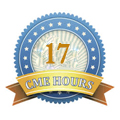
Harris Zourelidis
Dubai Bone and Joint Center, UAE
Title: Current concepts of treatment of ACL injuries
Biography
Biography: Harris Zourelidis
Abstract
ACL injury remains one of the most debatable topics in the Orthopaedic literature. Pubmed search using words “Anterior Cruciate” generates more then 14000 results. ACL rupture is a very common injury. 200,000 ACL ruptures occur only in USA annually. ACL tear can occur as an isolated injury or together with meniscal injuries or other knee ligament tears. ACL tear leads to various degree of instability of the knee. If left untreated in young and active person, this can lead to cartilage damage, meniscal tears and ultimately to arthritis. Diagnosis of the ACL tear is not straight forward and the instability should be assessed clinically. Sometimes it is very difficult to detect subtle instability and EUA is the only way to determine it. Surgical treatment of ACL has been offered for many years. Surgical technique, choice of graft, methods of fixation have been gradually improving. Better understanding of ACL anatomy has led to new, improved technique – anatomical ACL reconstruction. It allows placement and fixation of the graft to the footprints of native ACL. Graft placed that way stabilizes the knee in antero-posterior direction and also provides rotational stability, which previous techniques failed to address. Stable fixation of the graft allows immediate mobilization and faster recovery. Anatomical ACL reconstruction is presented step by step in this presentation with pitfalls and pearls.

